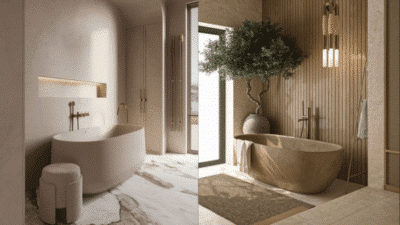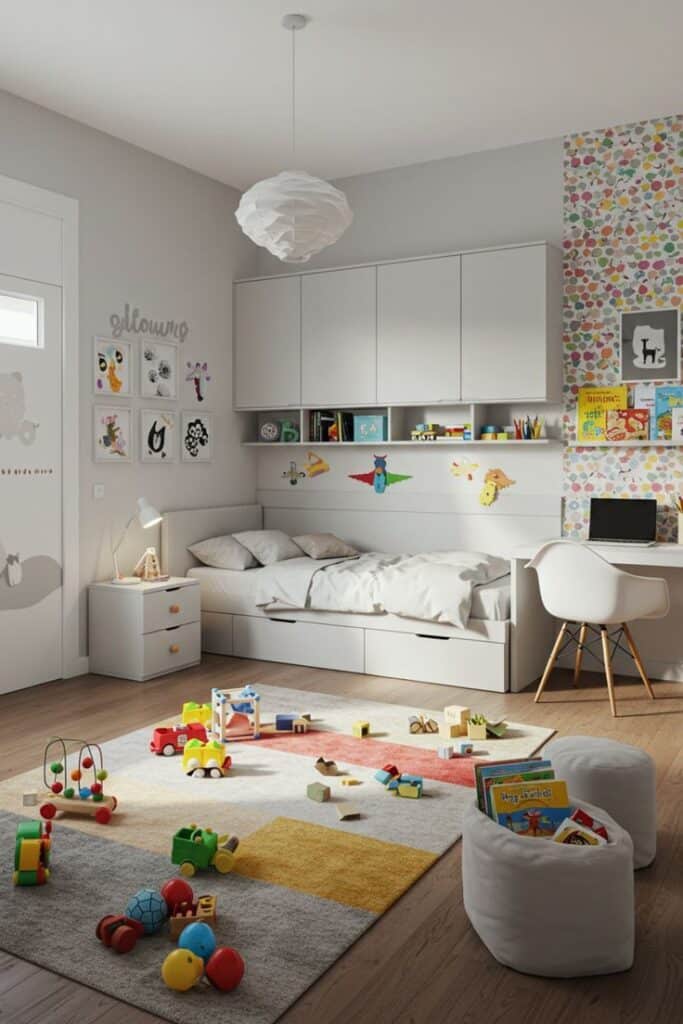
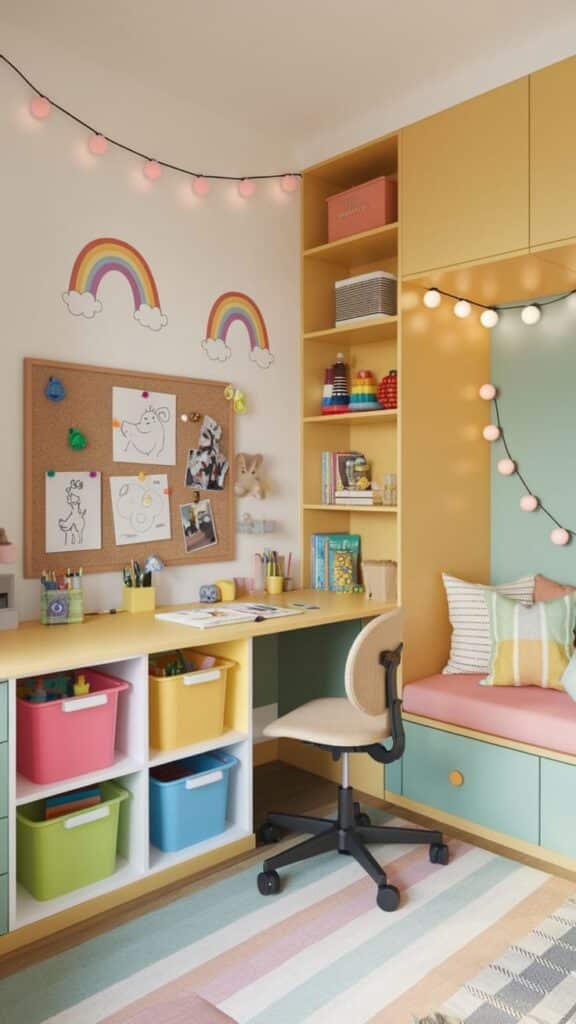
Designing a kids’ room that is both useful and enjoyable can make a big difference in a child’s daily life. A functional and fun kids’ room balances smart storage, flexible spaces, and playful touches that grow with the child. This helps keep the room organized while also making it a space where kids want to spend time.
Creating a room that suits a child’s needs and personality is key. When a room includes areas for learning, playing, and relaxing, it supports better habits and creativity. Thoughtful lighting and simple upgrades can also improve comfort and safety in the space.
With the right approach, a kids’ room can be more than just a place to sleep—it can be a spot that inspires and adapts to changing interests and needs.
Key Takeways
- A kids’ room should combine storage and fun elements.
- Flexible designs help the room grow with the child.
- Personal touches and smart lighting improve the room’s feel.
Essential Elements of Functional Kids’ Rooms
A practical kids’ room balances open space, safety, and furniture designed for comfort and growth. Attention to room layout, hazard prevention, and age-appropriate furniture ensures the space meets children’s needs and keeps them comfortable.
Space Planning Strategies
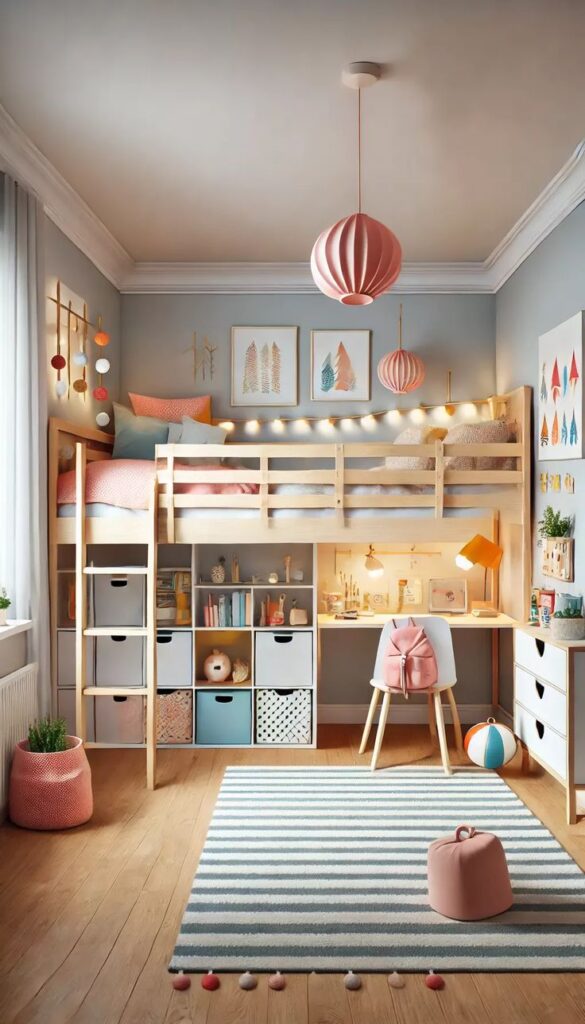
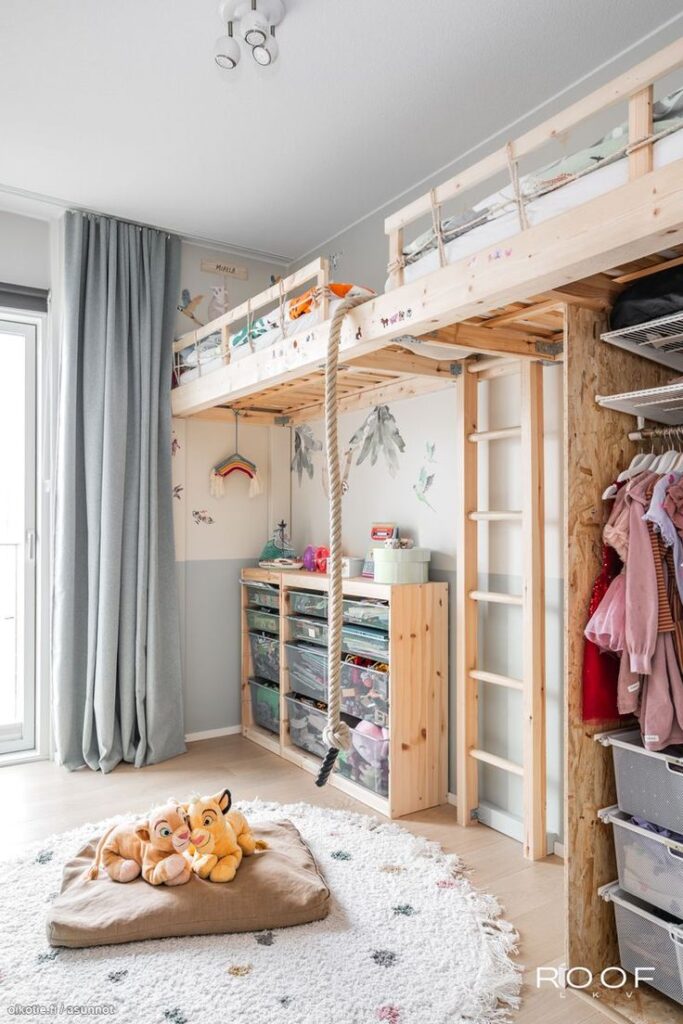
Effective space planning divides the room into activity zones such as sleeping, playing, and studying. Clear areas help children focus and move easily without clutter.
Storage solutions like bins, shelves, and under-bed spaces keep toys and books organized. Labeling storage helps kids learn to tidy up and find things quickly.
Flexible space works well for changing needs. Using foldable tables, stackable chairs, or modular furniture allows room layouts to adapt as the child grows.
Safety Considerations
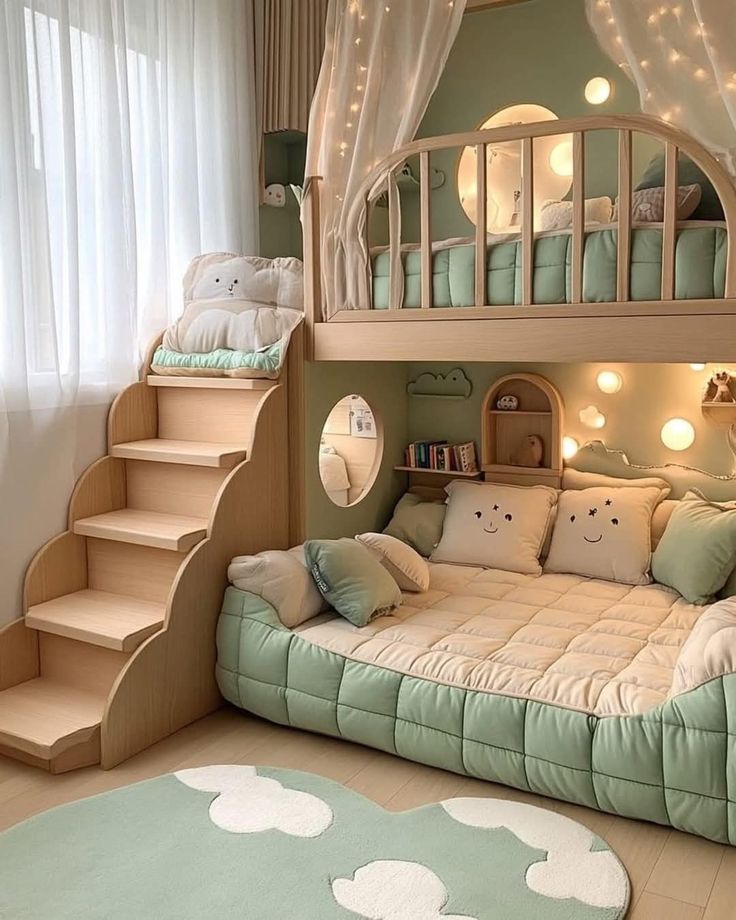
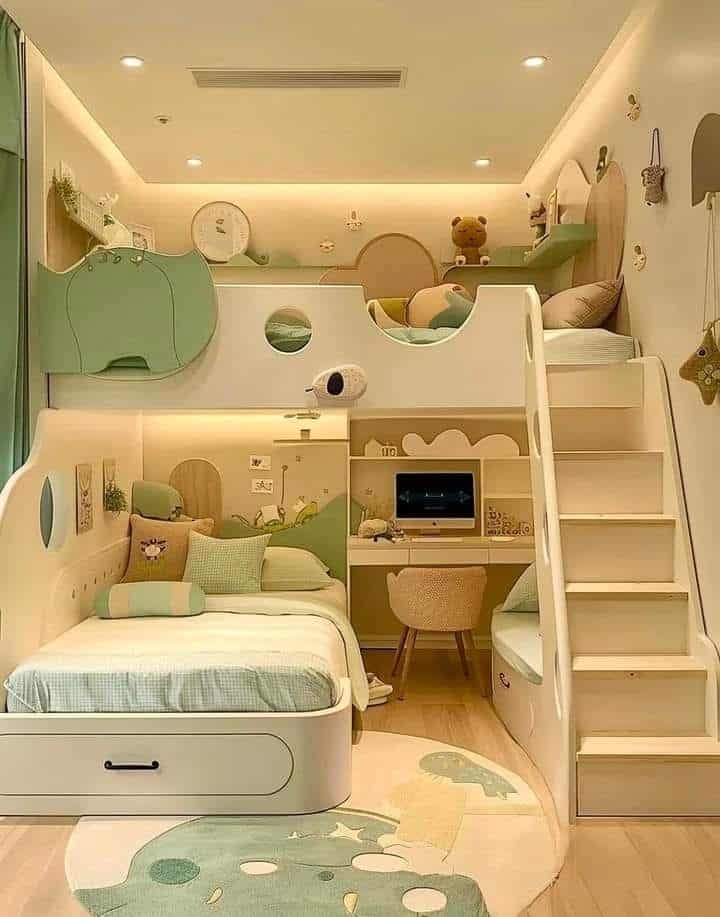
Safety is critical in kids’ rooms. Furniture should have rounded edges to prevent injuries from bumps and falls.
All shelves and tall items must be securely anchored to walls to avoid tipping accidents. Outlet covers and cord management keep electrical hazards away from children.
Non-toxic materials are important when selecting paint, furniture, and flooring. Using flame-retardant and allergy-friendly products reduces risks.
Ergonomic Furniture Choices
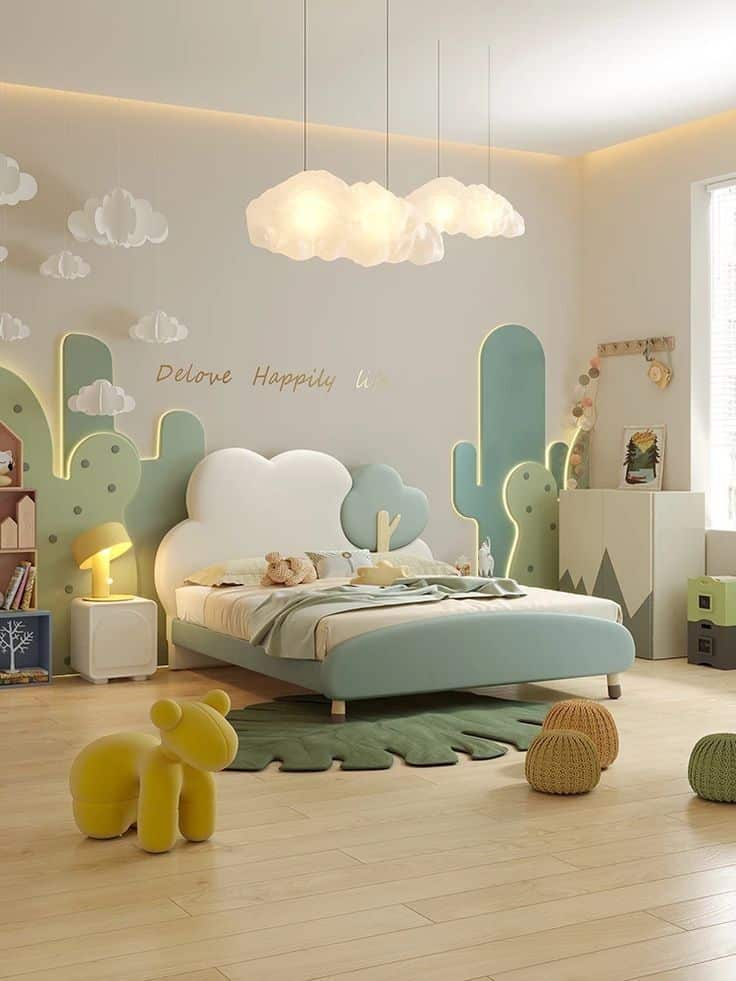
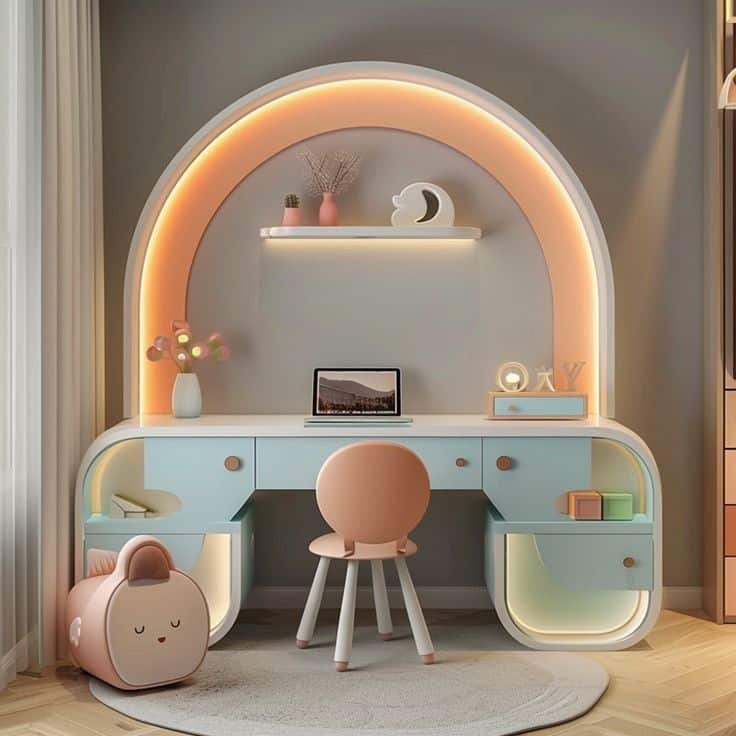
Choosing chairs and desks that support good posture helps children sit comfortably for homework or crafts. Adjustable furniture suits different ages and sizes.
Beds and seating should be at appropriate heights to avoid strain. A step stool can help young kids reach higher surfaces safely.
Soft cushions and breathable fabrics improve comfort. Durable materials like hardwood or high-quality plastic stand up to active use and last longer.
Maximizing Storage in Kids’ Rooms
Using clever storage methods helps keep the room tidy and makes it easier for kids to find their things. Furniture that serves more than one purpose can save space. Having systems to organize items teaches kids to store things properly and keeps clutter under control.
Creative Storage Solutions
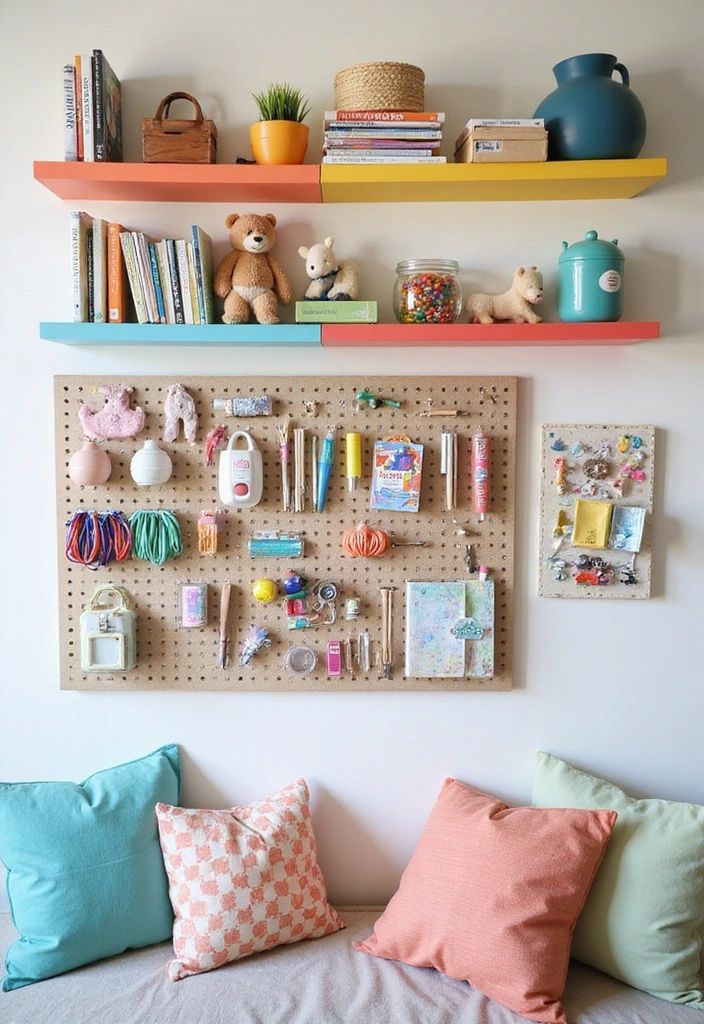
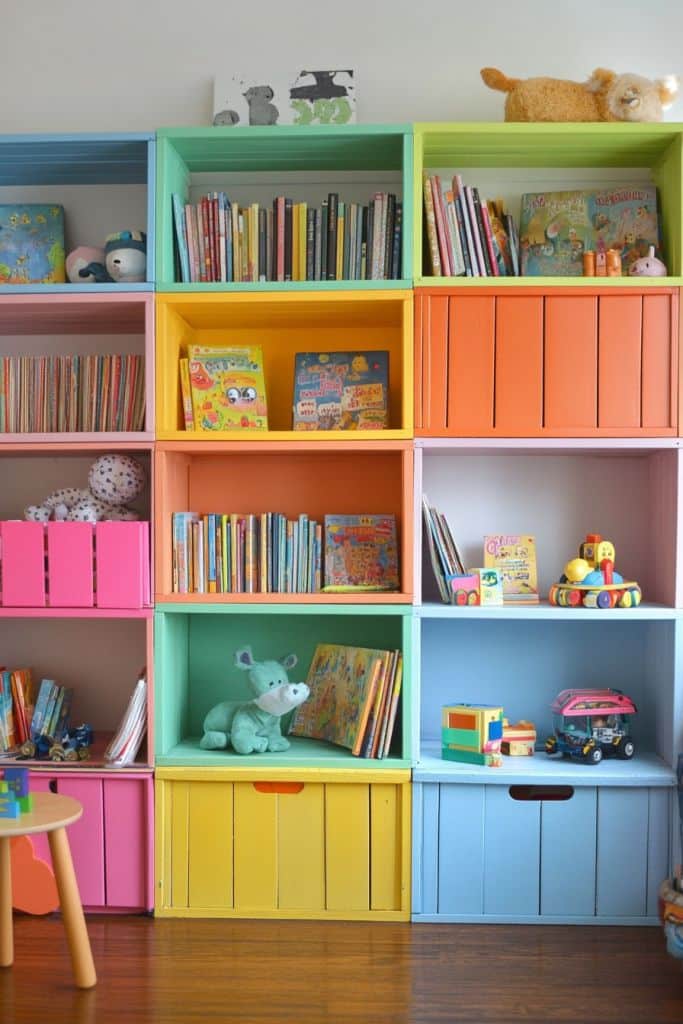
Bins, baskets, and wall-mounted shelves are simple ways to add storage without taking up floor space. Clear plastic bins let kids see what’s inside, which encourages them to put toys away.
Hooks and pegboards work well for hanging bags, hats, or small items. Using vertical space, like over the bed or doors, maximizes room without crowding.
Under-bed storage drawers or boxes help hide away less-used toys or seasonal clothes. Labeling these containers helps kids know where items belong.
Multi-Purpose Furniture Ideas
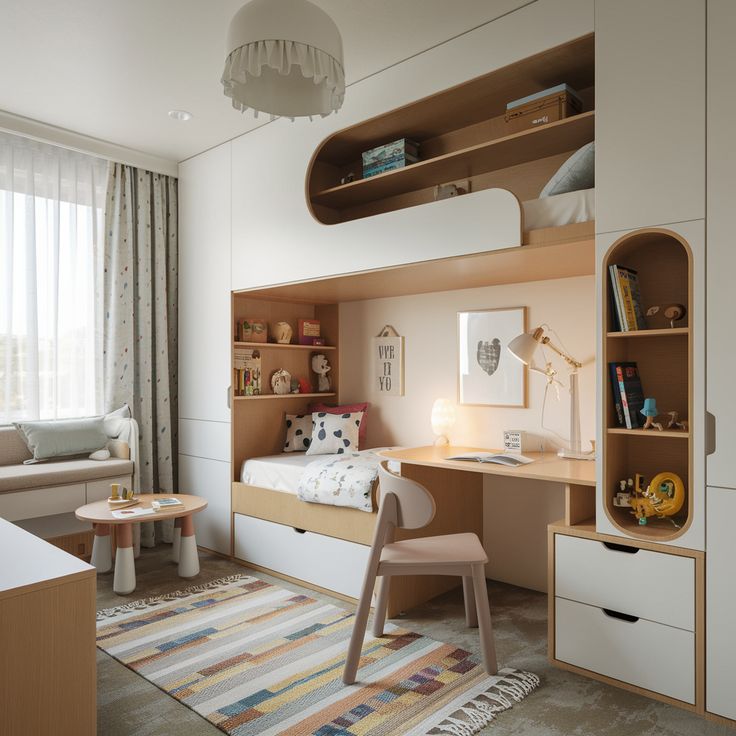
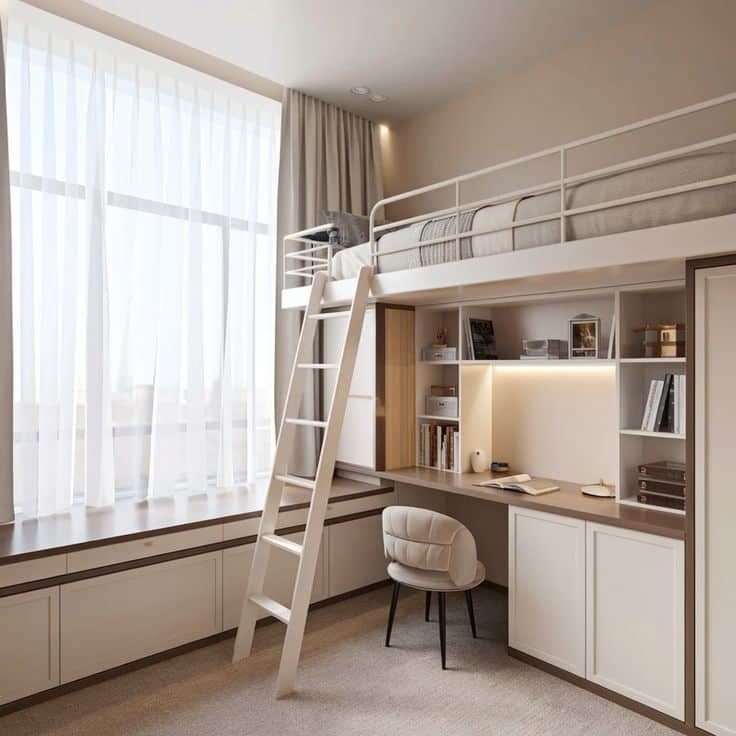
Furniture that combines storage and function reduces clutter. Beds with built-in drawers or shelves use space efficiently.
Desks with shelves or cubbies give a spot for school supplies and books. Sofas or ottomans that open up provide hidden storage for blankets or toys.
Using foldable tables or chairs can open space when not in use. Choosing pieces that grow with the child, like adjustable desks or beds, prevents the need for frequent replacements.
Organization Systems
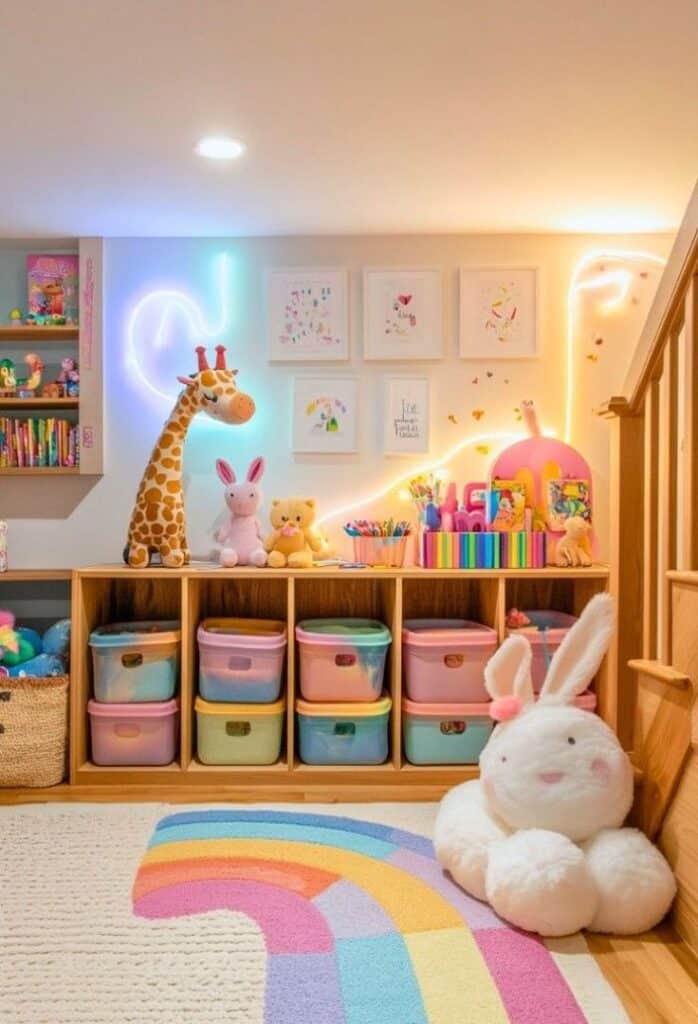
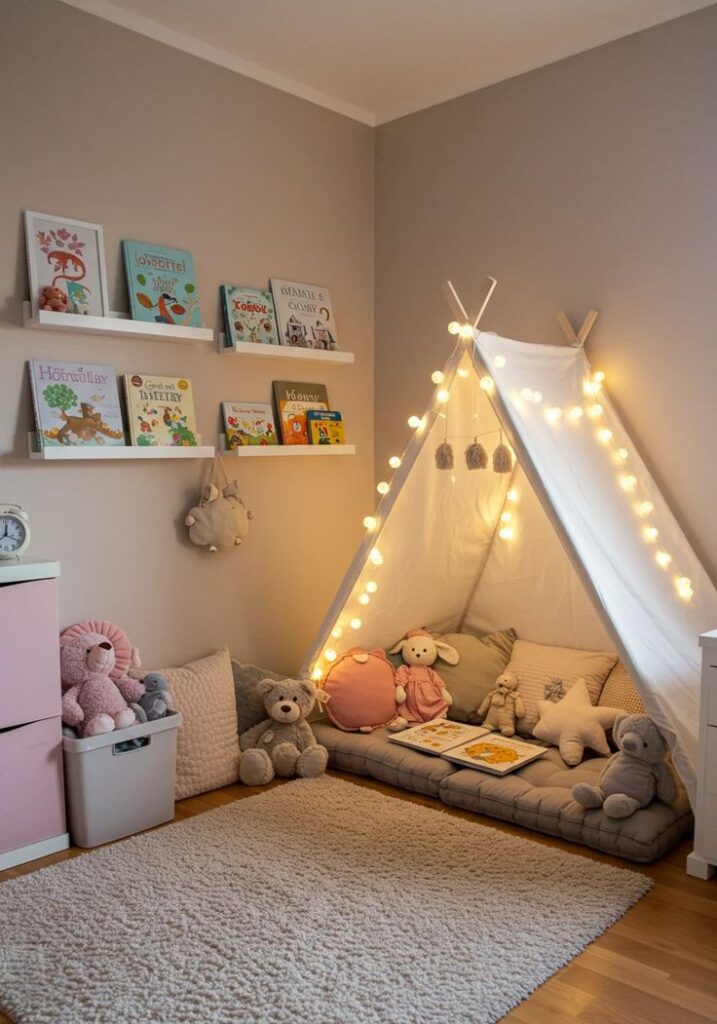
Having clear categories for toys, clothes, and school items makes it easier for kids to put things away. Using color-coded bins or labels supports this.
Daily routines, like a quick clean-up time, encourage good habits. A small chart or checklist can remind kids what goes where.
Keeping the most-used items at kid level helps them stay independent. Less-used things can be stored higher up or out of reach but still easy to access by adults.
Designing Flexible and Adaptable Spaces
Creating a kids’ room that can change with their needs saves time and money. It helps kids stay comfortable and organized as they grow and their interests shift. Key ideas include smart room layouts, furniture that adjusts, and features that support long-term use.
Modular Layouts
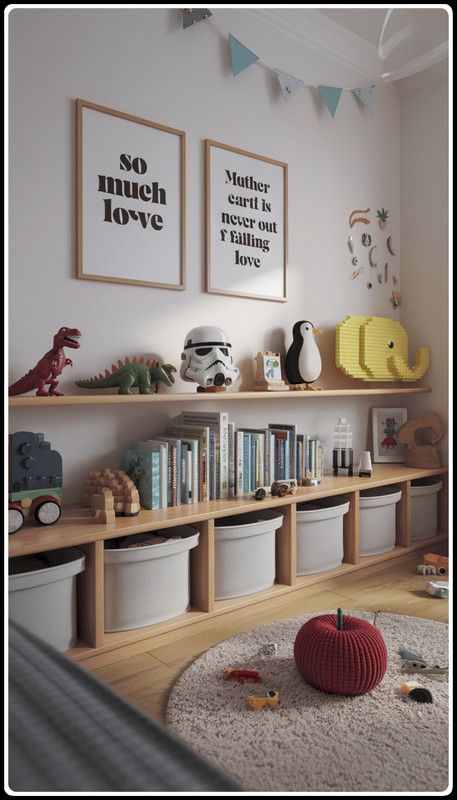
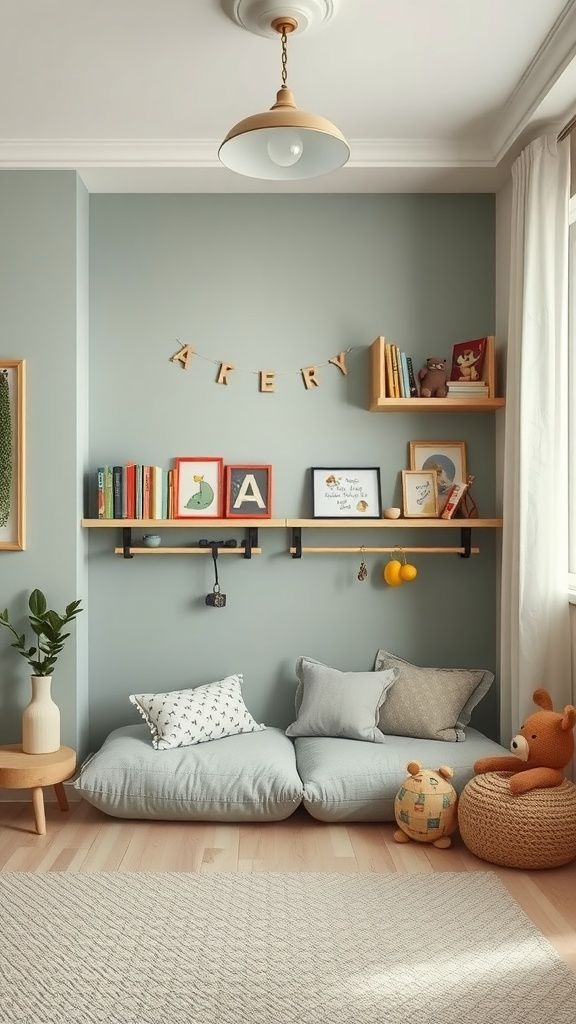
Modular layouts use separate pieces that can be moved or combined easily. Shelves, desks, and storage boxes on wheels can be rearranged for activities like homework, play, or sleep. This flexibility makes the room feel new without big changes.
Using stackable storage or cube organizers helps divide toys and supplies by type. These pieces keep things neat and are easy to take apart or rebuild.
Parents and kids both benefit because cleaning and redecorating become simple. Modular designs also help when sharing a room or adding new furniture later.
Growth-Friendly Features
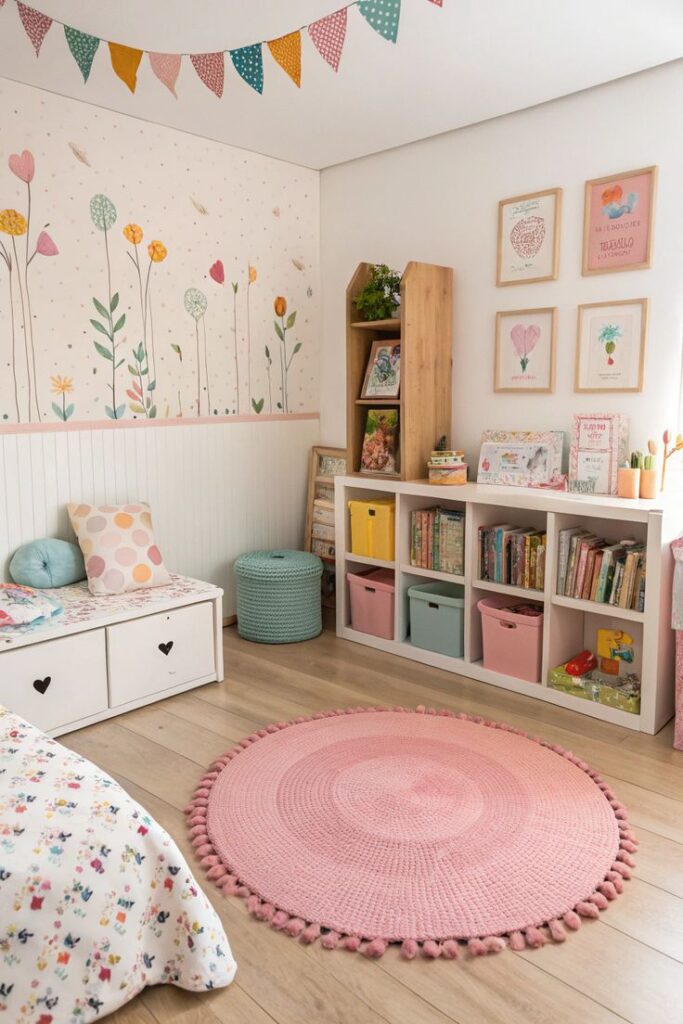
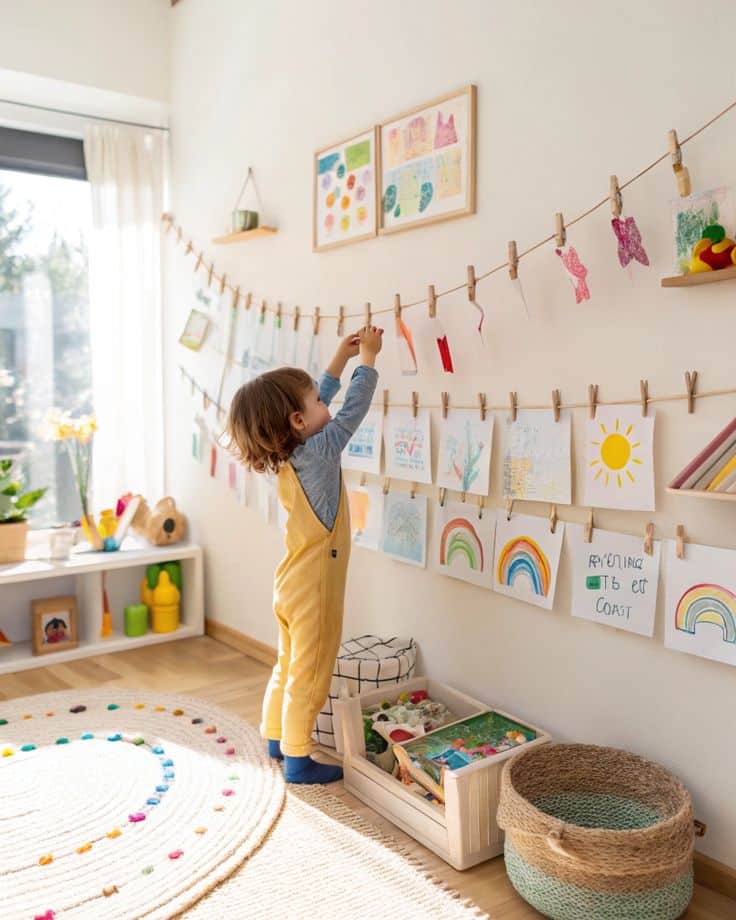
Kids’ needs change fast, so rooms should adjust to their growth. Adjustable desks and chairs set at different heights help with comfort and posture. This prevents strain during study time.
Wall hooks or shelves installed at various levels can move up as children get taller. Adjustable lighting, like dimmable lamps and layered overhead lights, supports different activities and moods.
Storage should be easy to reach for kids but can shift higher as they grow. Choosing durable materials ensures furniture lasts several years while still looking good.
Convertible Furniture
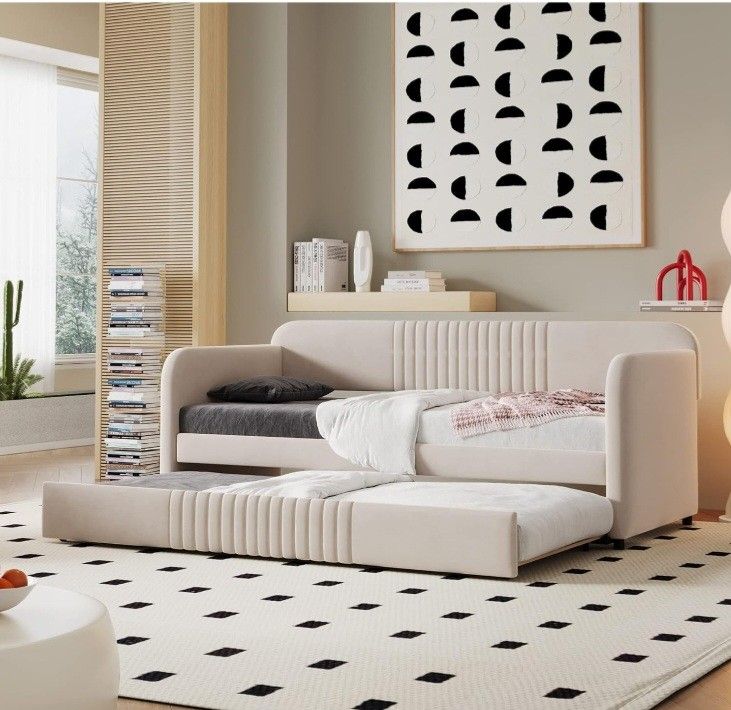
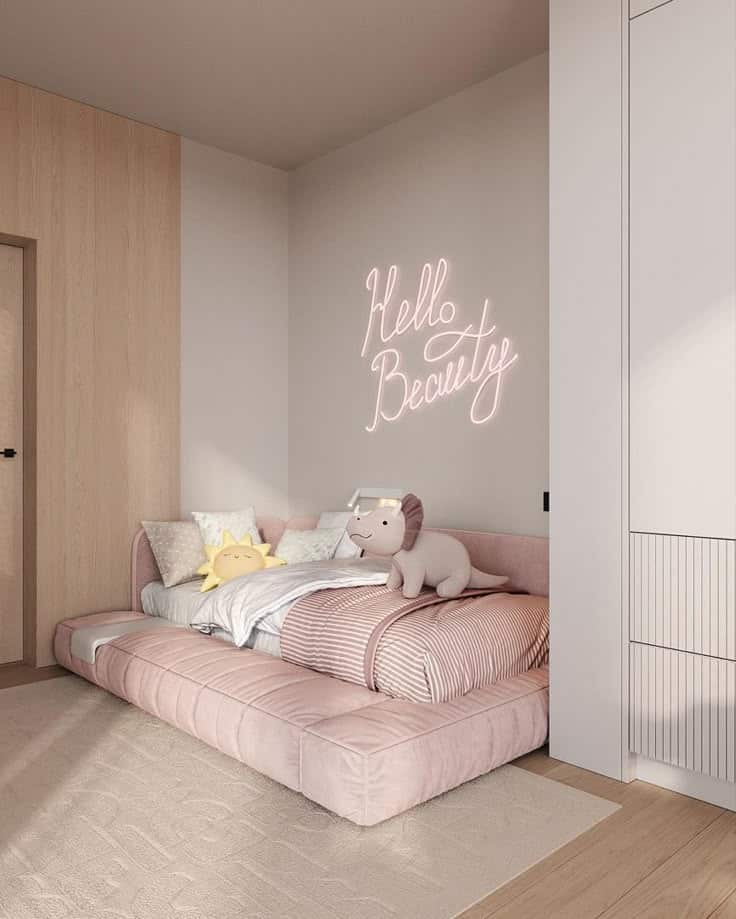
Convertible furniture serves more than one function in a small space. Beds that fold into a desk or a chair that changes to a stool save room and add fun.
Examples include bunk beds with built-in desks or fold-away tables. Sofas that turn into beds let the room be both a lounge and a sleeping area.
Convertible pieces offer better use of space and can adapt quickly to new needs. This furniture supports kids as they move from toddlers to teens without needing full replacements.
Incorporating Playful Design Features
Playful design adds energy and creativity to a kid’s room. It includes spaces for activities, bright visuals, and fun themes. These elements make the room enjoyable and encourage imagination.
Interactive Play Zones
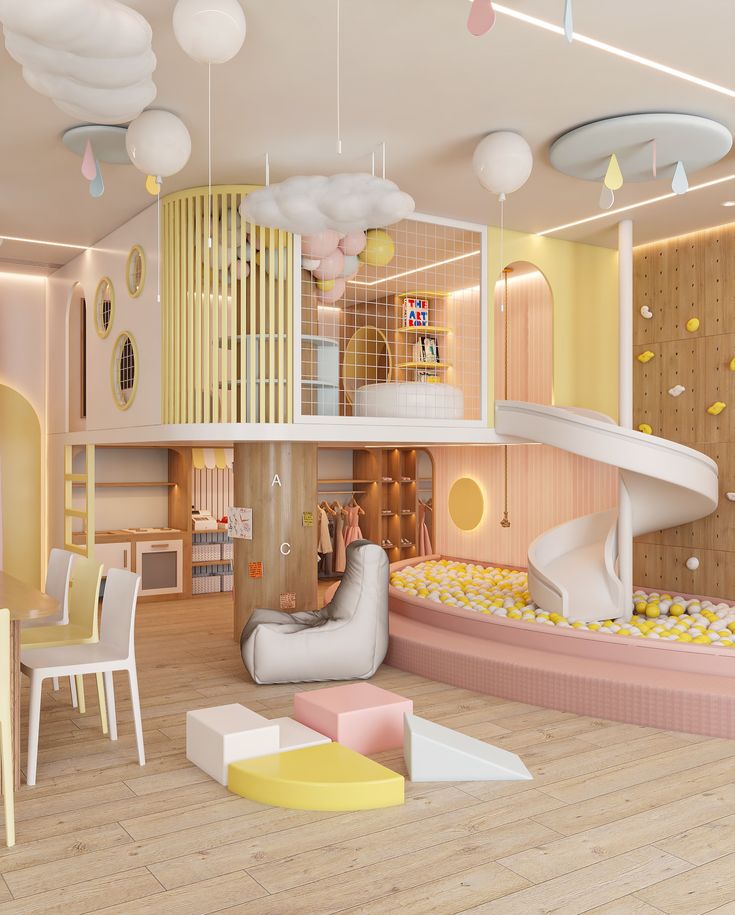

Creating areas where kids can move, build, and explore is key. A small tent or teepee can become a reading nook or secret hideout. Low shelves with bins for toys make cleanup easy and keep the space organized.
A chalkboard wall or magnetic board gives kids a place to draw or display art. Including a soft rug or foam tiles offers comfort and safety during active play. These zones help turn the room into a lively and flexible environment.
Bold Colors and Patterns
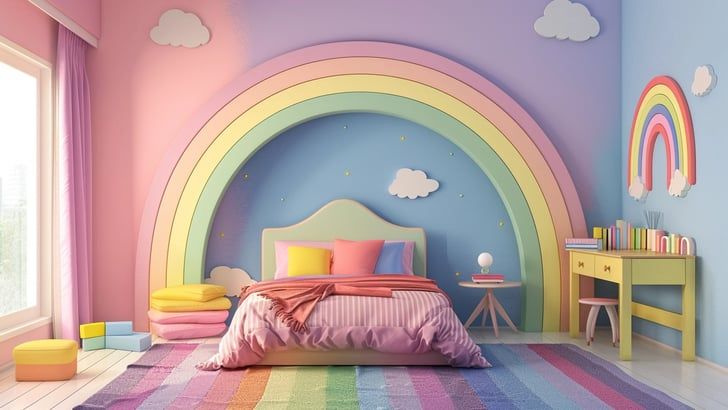
Using bold colors makes a room feel vibrant and exciting. Mixing stripes, polka dots, or geometric shapes adds visual interest. Walls can have a bright accent color or fun wallpaper with playful designs.
Furniture painted in strong colors like red, blue, or yellow grabs attention. Pillows, rugs, and curtains with patterns can tie the color scheme together. This helps stimulate creativity without overwhelming the senses.
Themed Decor Concepts
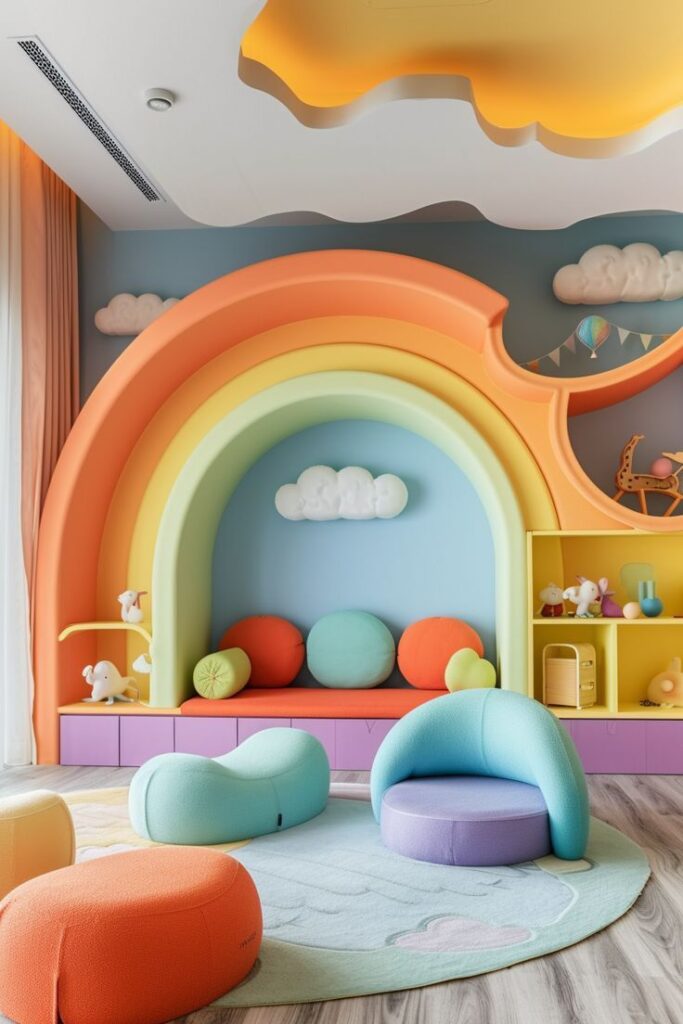

A clear theme gives the room a unique personality. Popular choices include space, animals, or underwater worlds. Themed bedding, wall stickers, and lamps can reinforce the chosen concept.
Adding a few key objects, like a rocket-shaped bookshelf or animal plushies, supports the theme. It’s important to balance theme details so the room doesn’t feel cluttered. Themes make the space more inviting and fun.
Encouraging Creativity and Learning
A kids’ room should have spots that help them focus and explore new ideas. Spaces for reading, studying, and hands-on activities support both their learning and imagination.
Study and Reading Nooks
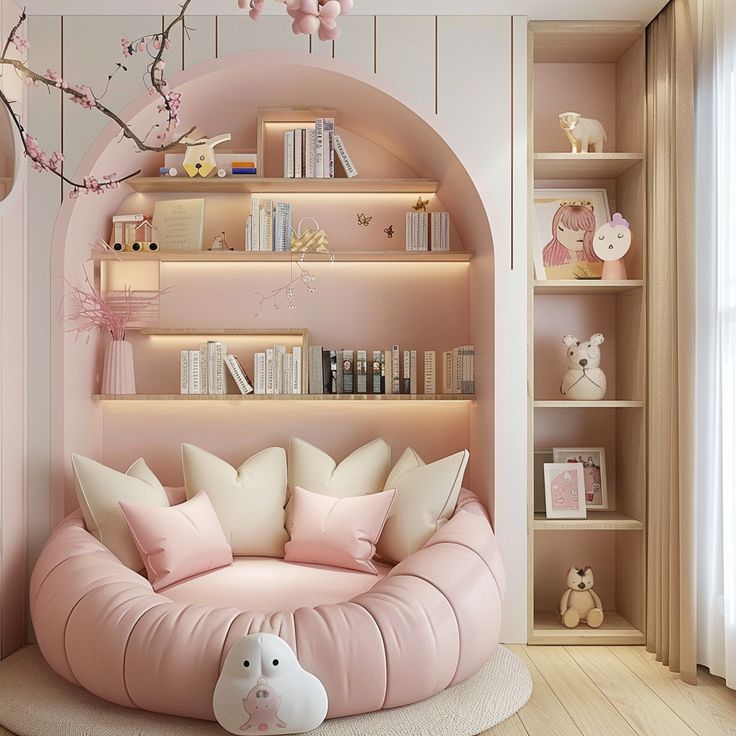
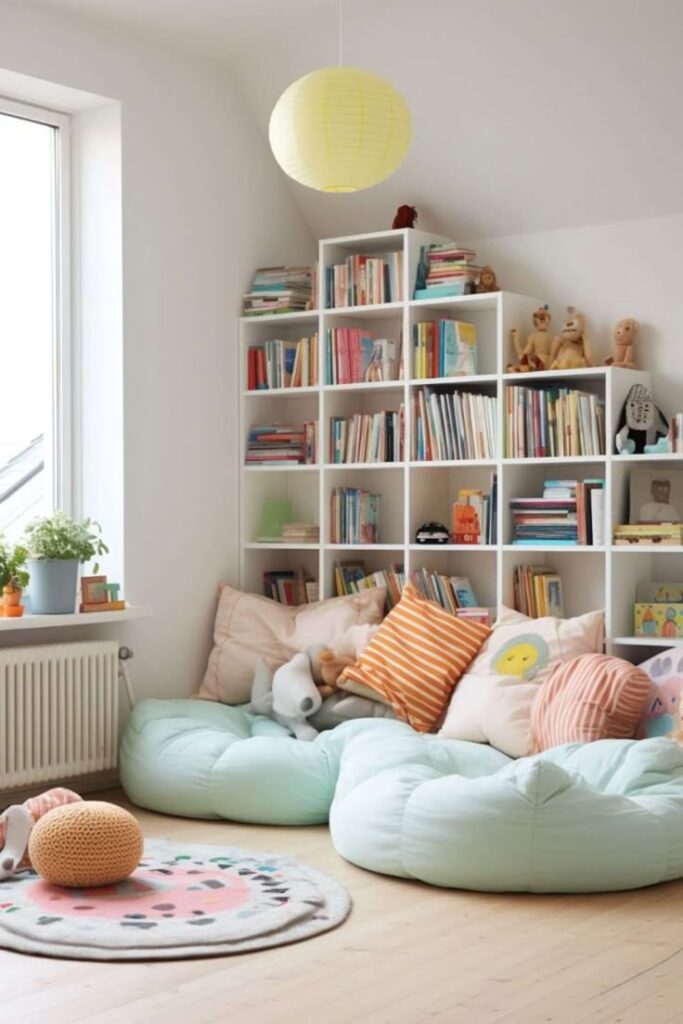
A study or reading nook should be quiet and well-lit. Comfortable seating like a small chair or bean bag helps kids settle in for reading or homework.
Shelves nearby can hold books, notebooks, and school supplies. Using bright but soft lighting reduces eye strain during reading or writing.
A desk or small table with organized storage keeps materials easy to find. Adding a corkboard or whiteboard lets kids pin notes or reminders.
Creating a distraction-free zone supports better concentration and learning habits.
Art and Activity Corners
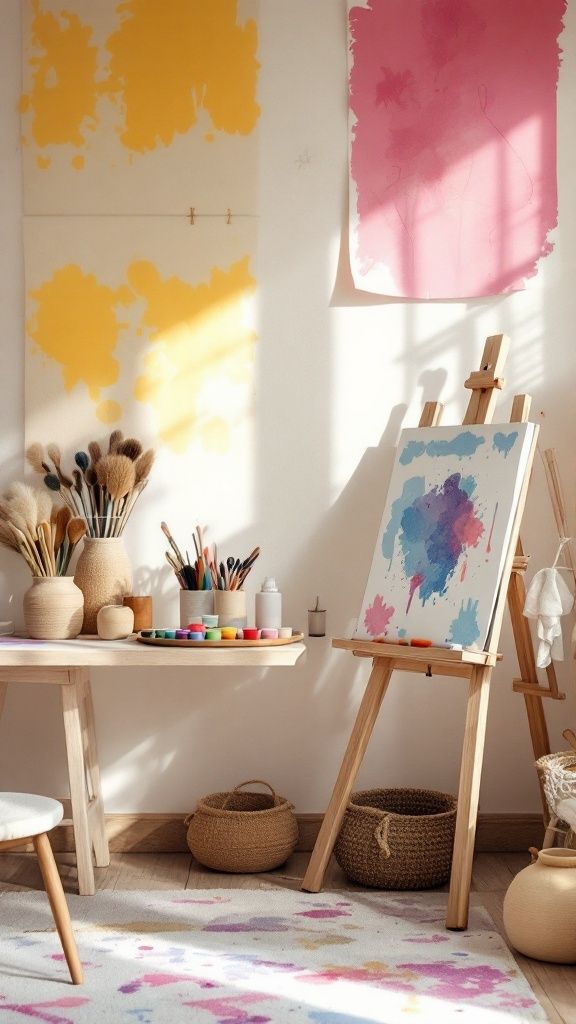
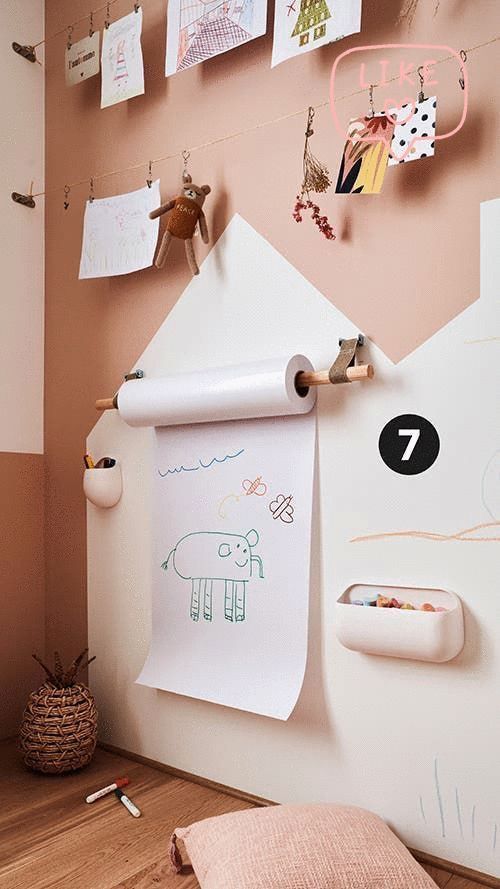
The art corner is a space for drawing, crafting, and creative play. A sturdy table and washable surface make it easier to manage messes.
Storage bins or shelves organize supplies like crayons, paper, glue, and scissors. Labeling containers helps kids find what they need quickly.
Having a pinboard or wall space to display their work boosts confidence and pride. Encouraging different types of activities keeps creativity fresh.
Good lighting and easy cleanup options make the area practical for daily use.
Personalization and Individual Expression
Creating a kids’ room that feels truly theirs involves adding custom touches and showcasing their creativity. This helps children feel proud of their space and encourages their unique interests.
Custom Decor Ideas
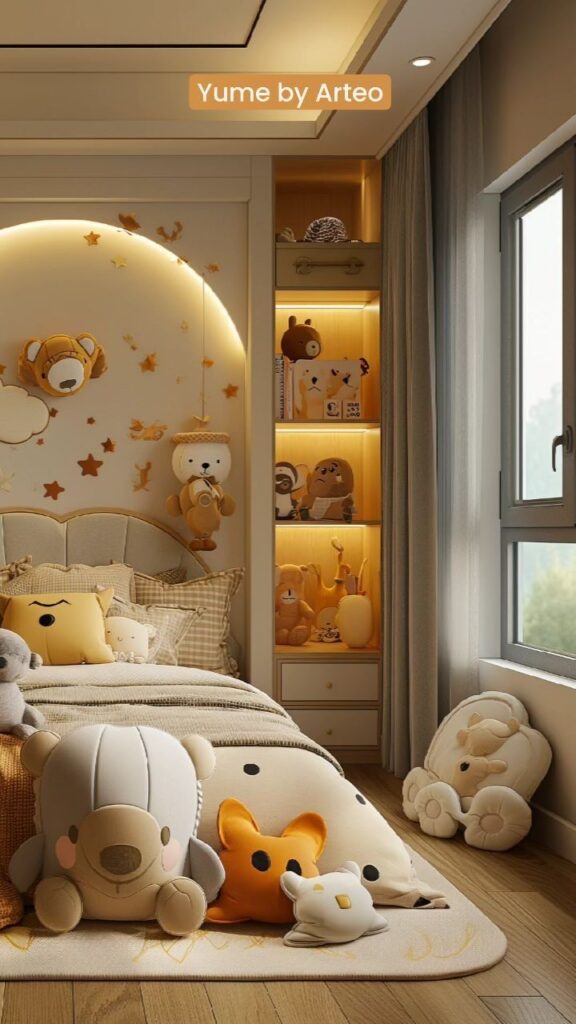
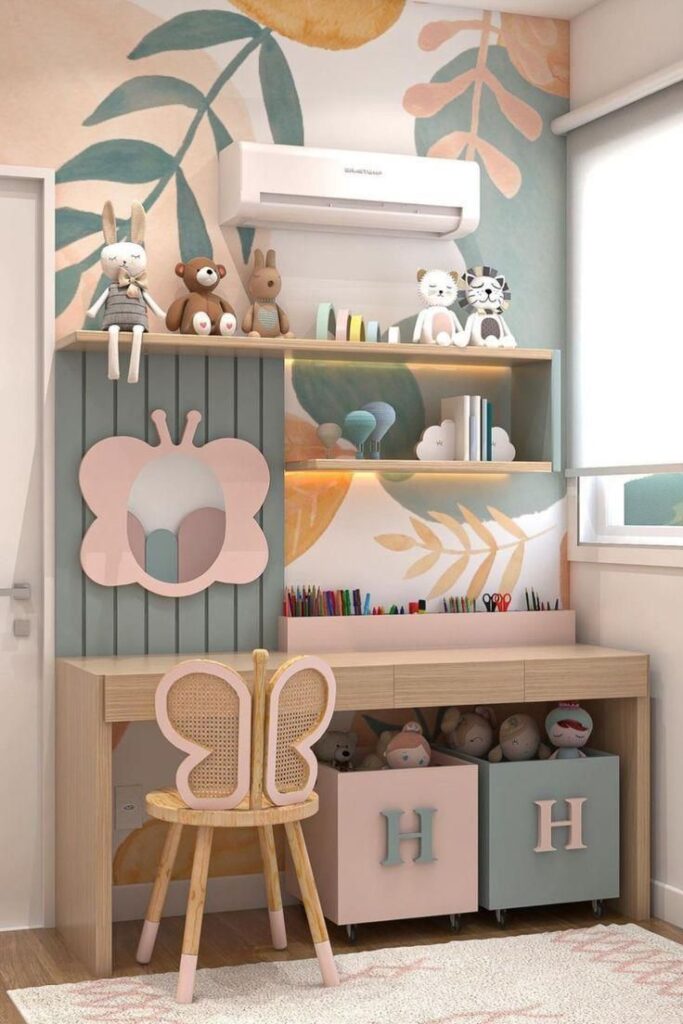
Personalized decor can include name signs, initial pillows, or custom wall decals. These items give the room a distinct identity linked to the child. Using colors and themes that reflect their hobbies or favorite characters makes the space more inviting.
Furniture with adjustable features or modular designs lets kids change their room as they grow. Adding personalized storage bins or labeled shelves helps keep items organized while adding a touch of individuality.
Display Solutions for Kids’ Artwork
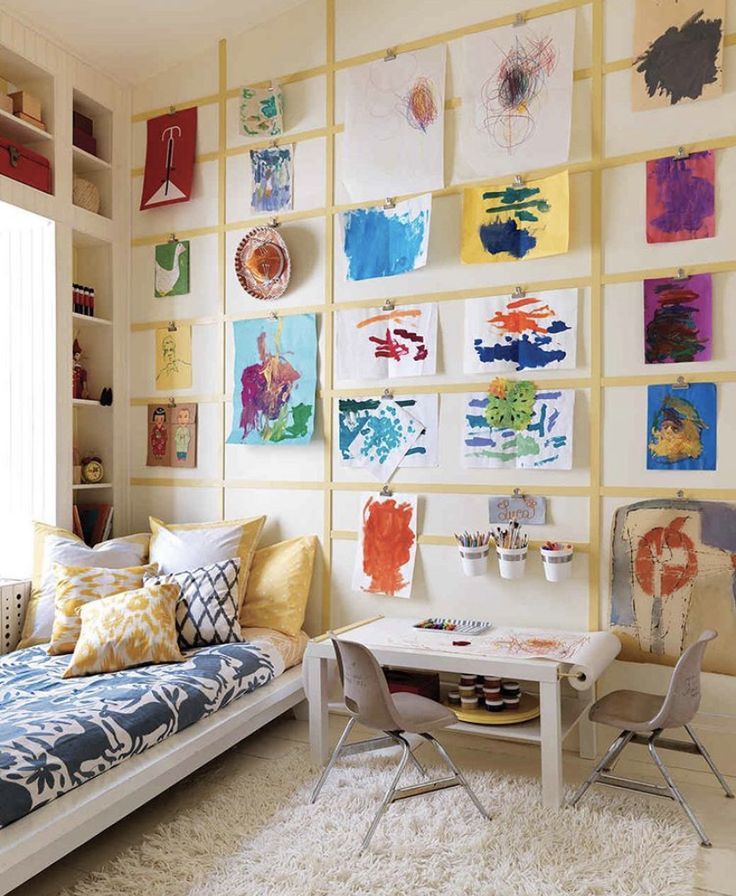
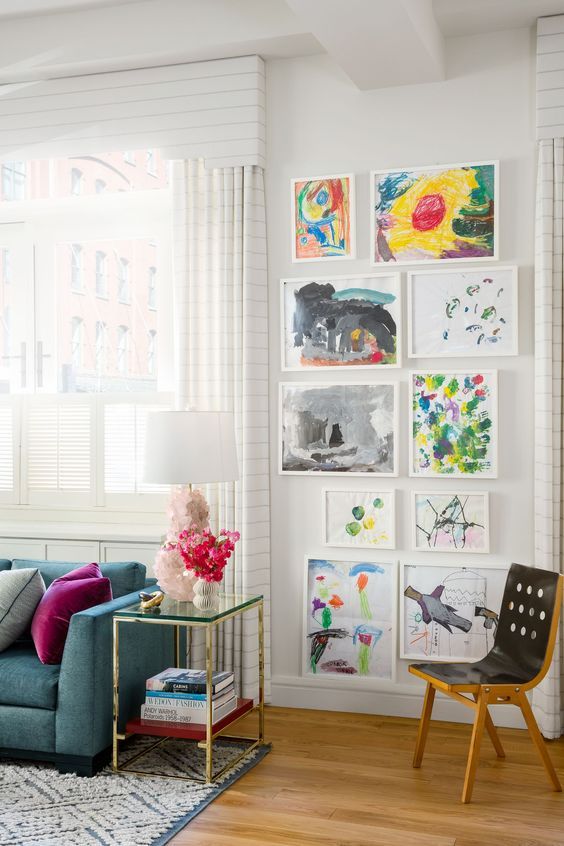
Displaying artwork boosts confidence and makes the child feel valued. Frames with easy-open backs or clipboards allow for quick updates.
String with clothespins, magnetic boards, or cork walls offer flexible ways to show drawings and crafts. Rotating art regularly keeps the display fresh and shows appreciation for their efforts.
These methods keep art organized and prevent clutter, making the room both creative and functional.
Lighting and Ambiance
Good lighting sets the mood and helps kids focus and feel comfortable. It should be bright enough for activities but soft enough for relaxation.
Layered Lighting Techniques
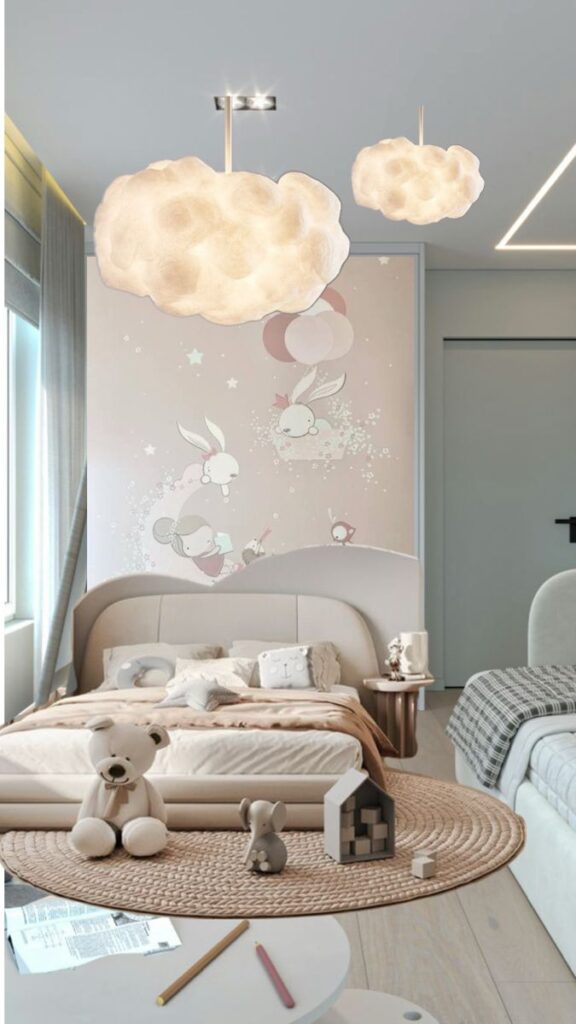
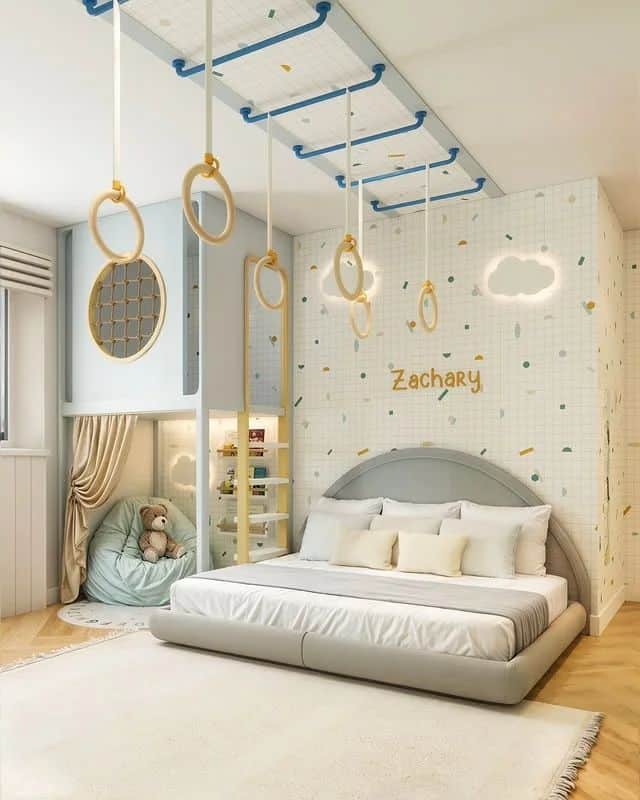
Using different types of lighting creates a balanced room. Overhead lights provide general brightness. Wall sconces or floor lamps add softer light. These help reduce shadows and glare.
A mix of warm and cool bulbs works well. Warm light makes the room cozy. Cooler light helps with tasks and playtime. Dimmer switches offer control over brightness levels.
Good placement is key. Lights should cover all areas, including desks, play zones, and reading corners. This flexibility supports both work and relaxation.
Nightlights and Task Lighting
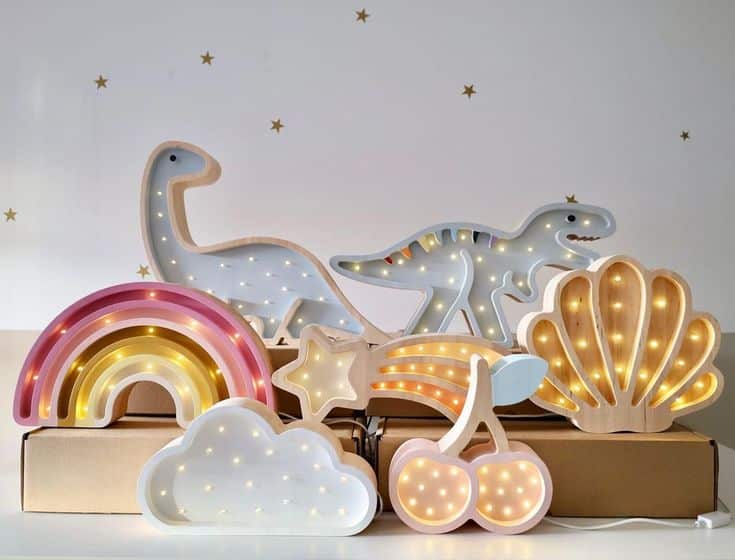
Nightlights keep kids safe in the dark and comfort scared children. Choose soft, warm nightlights with low brightness. Motion sensor nightlights are helpful for night trips to the bathroom.
Task lighting focuses on specific activities like reading or homework. Desk lamps with adjustable arms are ideal. They reduce eye strain and improve concentration.
Both nightlights and task lighting should be easy to reach and use. Brightness should be adjustable to fit the child’s needs throughout the day or night.
Smart Tech and Practical Upgrades
Adding the right technology and choosing easy-to-clean materials can make a kid’s room both fun and functional. These choices help keep the space organized, safe, and comfortable while making daily cleaning easier.
Tech Integration for Kids’ Spaces
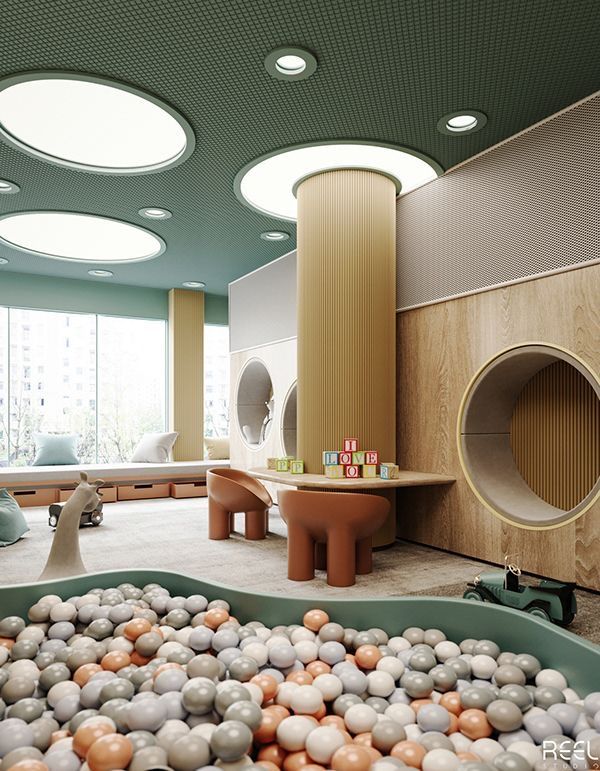
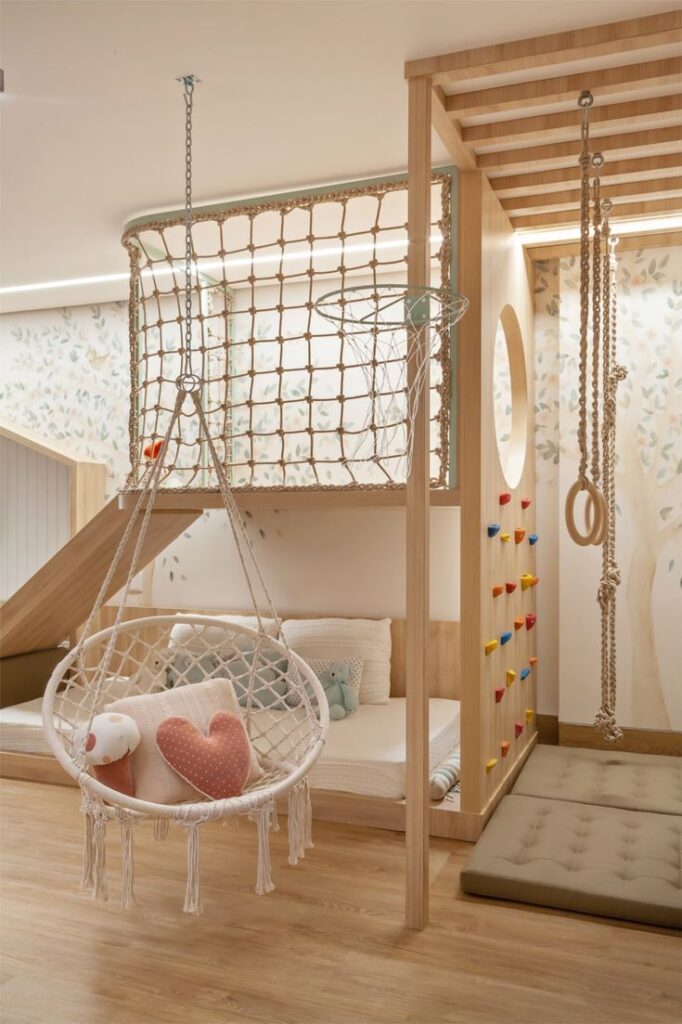
Using smart lighting allows parents and kids to adjust brightness and colors with a simple app or voice control. This can create a cozy atmosphere or help with homework by increasing light when needed.
Charging stations for tablets and phones keep devices organized and prevent cords from tangling. Consider furniture with built-in USB ports to make charging simple and neat.
Security cameras with parental controls can be placed discreetly in larger rooms. This helps adults monitor the safety of younger kids without being intrusive.
Smart speakers can offer educational games, music, and reminders, improving the kid’s daily routine. Choose models with volume limits to protect young ears.
Easy-to-Clean Materials
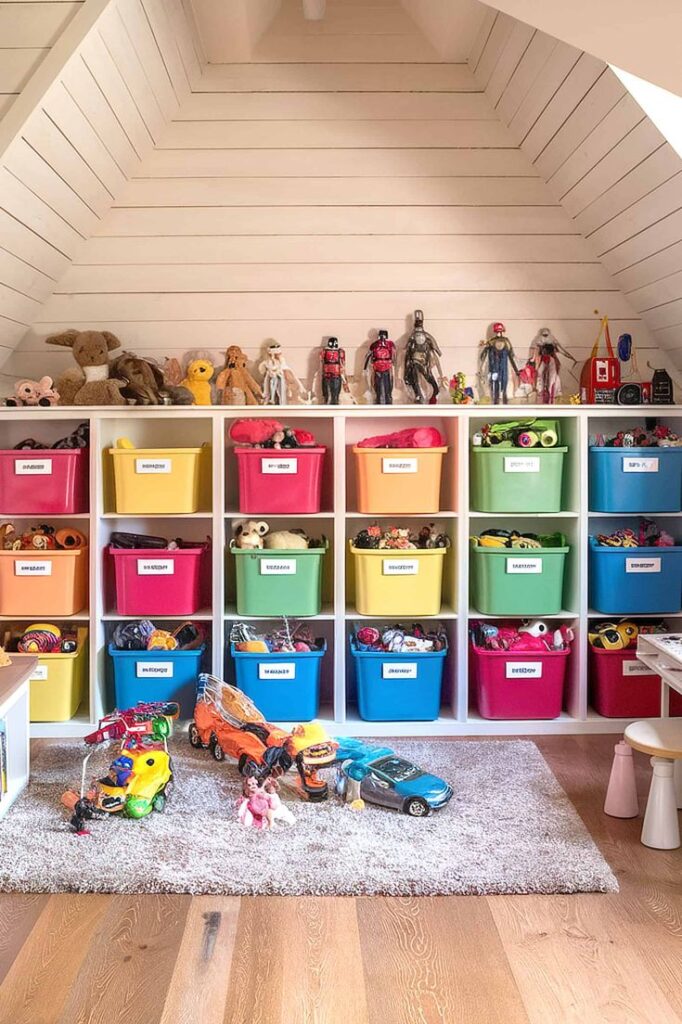
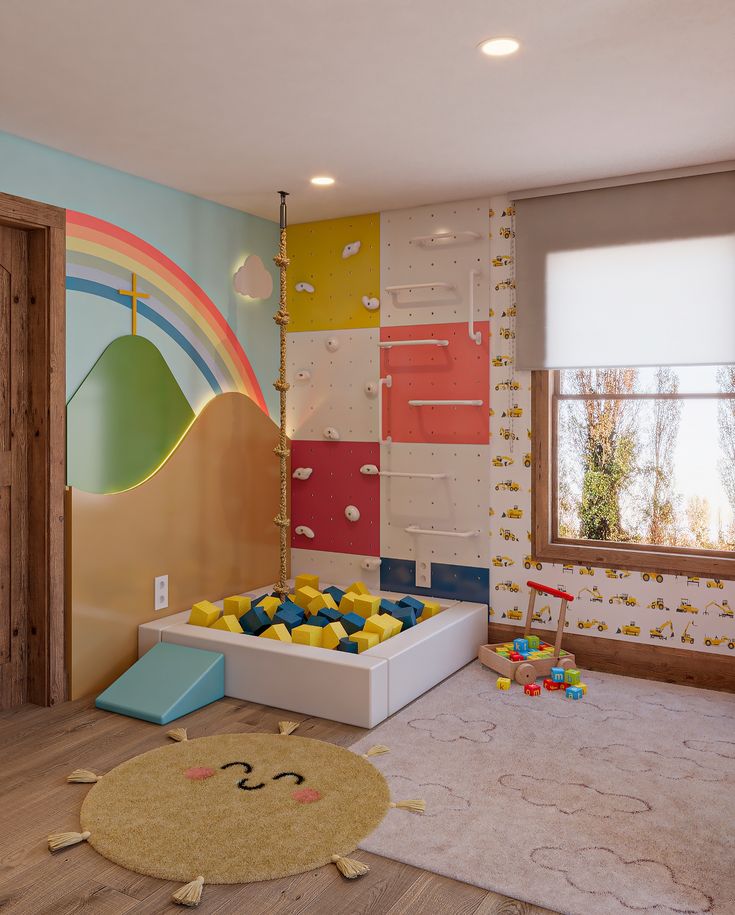
Selecting fabrics like microfiber or vinyl for furniture makes wiping spills fast and effective. These materials resist stains better than cotton or wool.
Floors with laminate or vinyl planks are durable and can be mopped quickly. Avoid carpets in high-traffic areas since they trap dirt and dust.
Wall paint with a satin or semi-gloss finish is easier to wipe clean after drawing or fingerprints. Using washable wallpaper can add color while still being simple to maintain.
Storage bins made of plastic or fabric that can be thrown into the wash simplify cleanup and organization. Clear bins help kids find what they need without making a mess.
Finishing Touches for a Fun Kids’ Room
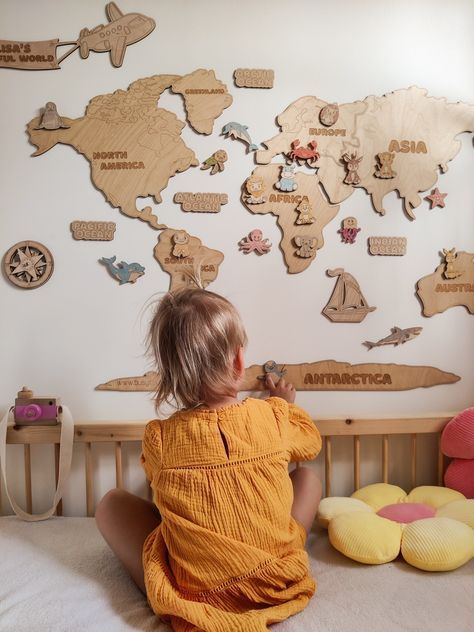
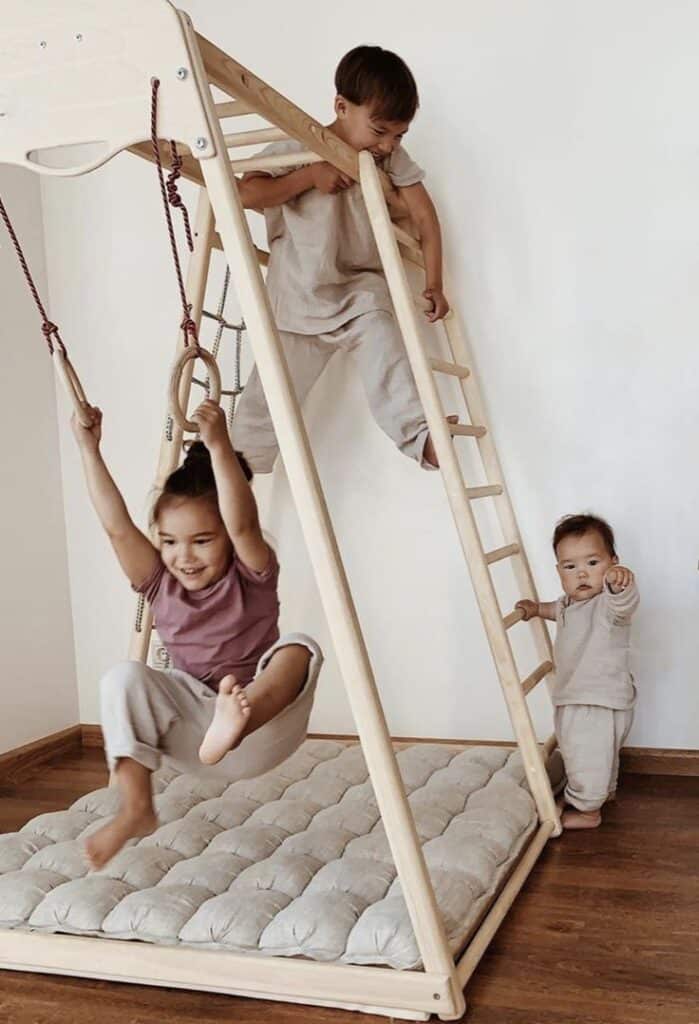
Adding finishing touches brings personality to a kid’s room. Fun decorations help make the space inviting and playful.
Wall art like posters, decals, or framed pictures can brighten the room without taking up space. They can also reflect the child’s favorite themes or colors.
Soft textiles such as rugs, cushions, and curtains make the room cozy. Choose materials that are easy to clean and durable for active play.
Lighting is important for both function and fun. String lights or lamps with colorful shades add a warm glow. A night light can also provide comfort during bedtime.
Storage baskets or bins keep toys organized while adding to the room’s look. Labeling storage helps children learn to put things away.
Small accessories like clocks, shelves, or hooks offer practical benefits. They also serve as extra design elements to complete the room’s style.
Display spaces for treasures or art encourage children to personalize their environment. This helps boost their sense of pride and creativity.
Using a mix of these simple details makes the room both functional and enjoyable to spend time in.
- 4.8Kshares
- Facebook0
- Pinterest4.8K
- Twitter0



